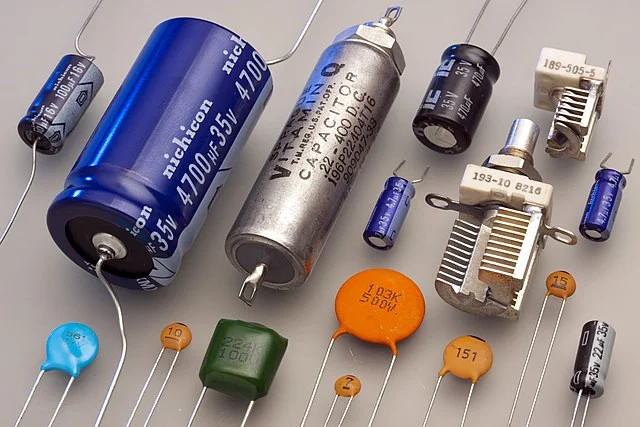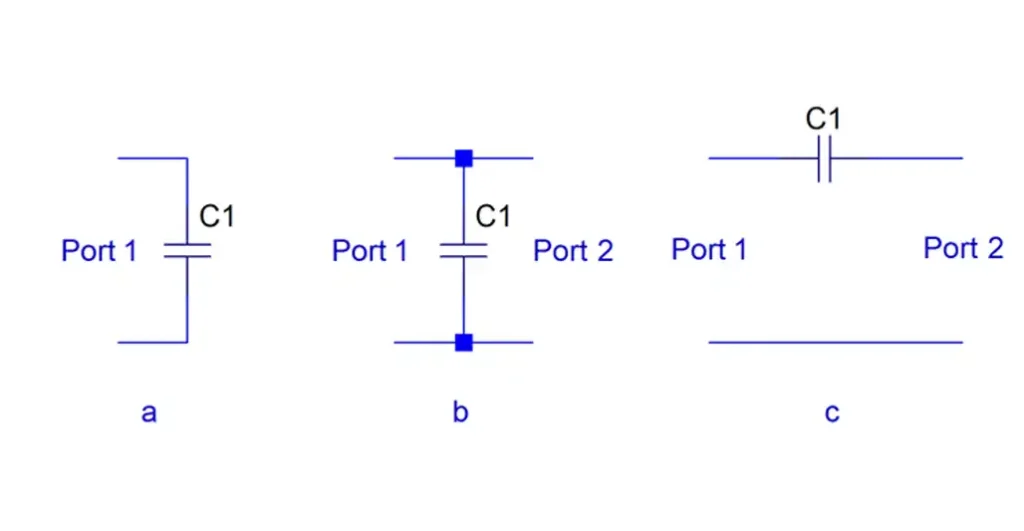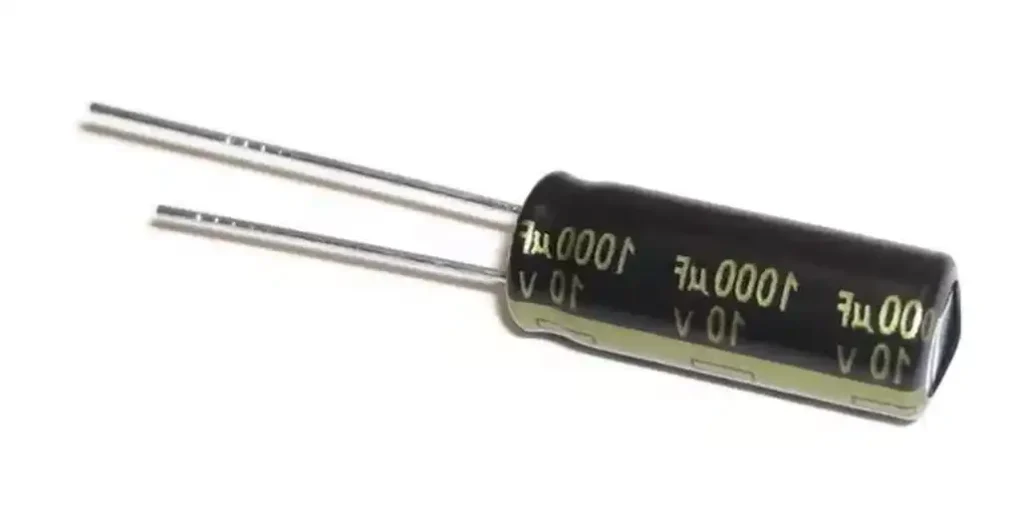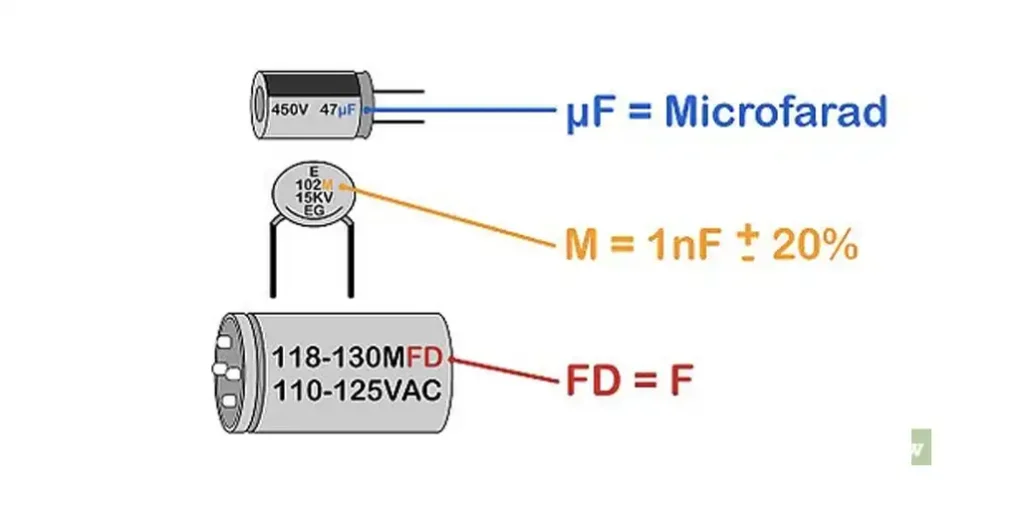In the realm of electronics, capacitors are vital components that store and release electrical energy. Understanding the significance of various specifications associated with capacitors is crucial for both enthusiasts and professionals.
One such specification that often prompts curiosity is UF. What exactly does UF mean on a capacitor?
Let’s delve into this topic to demystify UF and its implications comprehensively.
Capacitor Basics

A capacitor is an essential component in electronics that stores and releases electrical energy. It consists of two conductive plates separated by an insulating material called a dielectric. When voltage is applied across the plates, an electric field forms, allowing the capacitor to store charge.
Capacitors come with various specifications that determine their performance. One crucial parameter is capacitance, which measures the capacitor’s ability to store charge. Capacitance is typically measured in farads (F), although smaller units like microfarads (µF) or picofarads (pF) are commonly used for practical purposes.
Another important specification is the voltage rating, which indicates the maximum voltage the capacitor can handle safely. Exceeding this rating can lead to damage or failure of the capacitor.
Tolerance is another parameter that specifies the allowable deviation from the specified capacitance value. It ensures consistency in performance across different capacitors of the same nominal value.
Understanding these basic parameters is essential for selecting the right capacitor for a specific application, ensuring optimal performance and reliability in electronic circuits.
Capacitor Parameters

Capacitors are vital components in electronic circuits, and understanding their various parameters is crucial for selecting the right capacitor for a particular application. Here are some key parameters to consider:
Capacitance: Capacitance is the measure of a capacitor’s ability to store charge. It is measured in farads (F), with smaller units like microfarads (µF) or picofarads (pF) commonly used in practice. Capacitance determines how much charge a capacitor can store for a given voltage.
Voltage Rating: The voltage rating specifies the maximum voltage that can be applied across the capacitor without risking damage or failure. Exceeding this rating can lead to breakdown of the dielectric material and potentially catastrophic failure.
Tolerance: Tolerance indicates the allowable deviation from the specified capacitance value. It ensures consistency in performance across different capacitors of the same nominal value. Tolerance is typically expressed as a percentage of the nominal capacitance value.
Temperature Coefficient: The temperature coefficient quantifies how the capacitance of a capacitor changes with temperature variations. It is specified as a percentage change in capacitance per degree Celsius change in temperature. Capacitors with a low temperature coefficient exhibit minimal variation in capacitance over a wide temperature range.
Equivalent Series Resistance (ESR): ESR refers to the inherent resistance present in a capacitor’s conductive elements and dielectric material. It affects the capacitor’s performance at high frequencies and can lead to energy losses and heating in the capacitor.
Dielectric Material: The dielectric material between the capacitor plates determines the capacitor’s performance characteristics, including its capacitance, voltage rating, and temperature stability. Common dielectric materials include ceramic, electrolytic, and polyester film.
Life Expectancy: Capacitors have a finite lifespan, and their longevity depends on factors such as operating temperature, voltage stress, and environmental conditions. Manufacturers often provide specifications related to the expected lifespan of capacitors under typical operating conditions.
Getting these parameters enables engineers and hobbyists to select capacitors that meet the requirements of their specific applications, ensuring reliable performance and longevity in electronic circuits.
What is UF in Capacitor

What is UF in Capacitor
UF in capacitor terminology stands for microfarads (µF), which is a unit of capacitance used to measure the amount of charge a capacitor can store. Capacitance is a fundamental property of capacitors, indicating their ability to store electrical energy.
Microfarads (UF) represent a fraction of a farad, with one microfarad equaling one millionth of a farad. This unit is commonly used to express capacitance values for capacitors, especially those with moderate to small capacitance ratings.
In practical terms, microfarads are used to specify the capacitance of capacitors in electronic circuits. For example, a capacitor with a capacitance of 10 microfarads (10µF) can store ten millionths of a farad of electrical charge when a specific voltage is applied across its terminals.
Understanding UF in capacitors is essential for selecting the right capacitor for a particular application. Capacitors with different capacitance ratings, including microfarads, picofarads, and nanofarads, serve various purposes in electronic circuits, ranging from energy storage and filtering to signal coupling and timing.
UF in capacitor notation refers to microfarads, representing a unit of capacitance crucial for determining a capacitor’s charge storage capacity and suitability for specific electronic applications.
Exploring UF’s Applications

UF (microfarads) is a common unit used to denote the capacitance of capacitors, and capacitors with UF ratings find widespread applications across various industries and electronic devices. Let’s delve into some common applications where capacitors with UF capacitance ratings are extensively utilized:
Filtering and Decoupling: Capacitors with UF ratings are often employed in electronic circuits for filtering out unwanted noise and stabilizing voltage levels. They serve as decoupling capacitors, ensuring smooth and reliable operation of electronic devices by absorbing transient voltage spikes and fluctuations.
Coupling Capacitors in Audio Systems: In audio systems, UF-rated capacitors function as coupling capacitors, blocking DC voltage while allowing AC signals to pass through. This helps in preserving the integrity of audio signals while eliminating any undesirable DC offset, ensuring high-quality audio output.
Power Supply Decoupling: Capacitors with UF ratings play a crucial role in power supply circuits by decoupling sensitive components from fluctuations in the main power source. They absorb and smooth out variations in voltage, ensuring stable and clean power delivery to critical components, thereby enhancing the overall performance and reliability of electronic devices.
Timing and Oscillator Circuits: Capacitors with UF ratings are commonly used in timing and oscillator circuits to control the frequency of oscillation. By adjusting the capacitance value, engineers can fine-tune the timing characteristics of these circuits, enabling precise control over various electronic functions and operations.
Motor Start and Run Capacitors: In electric motors, capacitors with UF ratings are utilized as start and run capacitors to control the motor’s starting torque and running efficiency. These capacitors provide the necessary phase shift to start the motor smoothly and maintain stable operation during running, improving overall motor performance and longevity.
Voltage Regulation and Energy Storage: Capacitors with UF capacitance ratings are integral components in voltage regulation circuits, where they help maintain a constant voltage output by storing and releasing electrical energy as needed. They also serve as energy storage devices in various applications, such as backup power systems and energy harvesting devices.
By exploring these diverse applications, it becomes evident that capacitors with UF ratings play a crucial role in numerous electronic systems and devices, contributing to their functionality, reliability, and performance across a wide range of applications and industries.
FAQs
How do you calculate the charge stored in a capacitor in microfarads?
To calculate the charge stored in a capacitor in microfarads (µF), you can use the formula: Q = CV, where Q represents the charge in coulombs, C is the capacitance in farads, and V is the voltage across the capacitor in volts.
Can capacitors with UF ratings be used interchangeably with those rated in picofarads (pF)?
While capacitors rated in microfarads (UF) and picofarads (pF) serve different capacitance ranges, they are not directly interchangeable due to their varying capacitance values. It’s essential to select capacitors with capacitance ratings appropriate for the specific application’s requirements.
What factors influence the choice between capacitors rated in microfarads (UF) and millifarads (mF)?
The choice between capacitors rated in microfarads (UF) and millifarads (mF) depends on the specific application’s capacitance requirements. Microfarad-rated capacitors are suitable for low to moderate capacitance applications, while millifarad-rated capacitors are preferred for higher capacitance needs.
Is there a standard color coding system for capacitors rated in microfarads (UF)?
Unlike resistors and some other electronic components, capacitors generally do not follow a standardized color coding system for denoting their capacitance values. Instead, capacitance values are typically expressed directly in microfarads (UF) or other appropriate units on the capacitor’s label or datasheet.
Can capacitors with UF ratings be used in high-voltage applications?
While capacitors with UF ratings are suitable for various low to moderate voltage applications, they may not be appropriate for high-voltage applications due to their voltage limitations. It’s essential to select capacitors with voltage ratings compatible with the specific application’s requirements to ensure safety and reliability.
How do temperature variations affect the capacitance of capacitors rated in microfarads (UF)?
Temperature variations can impact the capacitance of capacitors, including those rated in microfarads (UF). In general, capacitors exhibit a decrease in capacitance as temperature rises and an increase as temperature decreases. Manufacturers typically specify temperature coefficients to characterize these variations and ensure reliable performance across a range of operating conditions.
Conclusion
In conclusion, UF on a capacitor stands for microfarads, representing a unit of capacitance commonly used in electronic circuits. Understanding UF’s significance is essential for selecting the right capacitors for various applications, ensuring optimal performance and reliability. By unraveling the mysteries surrounding UF, enthusiasts and professionals alike can navigate the world of capacitors with confidence and precision.